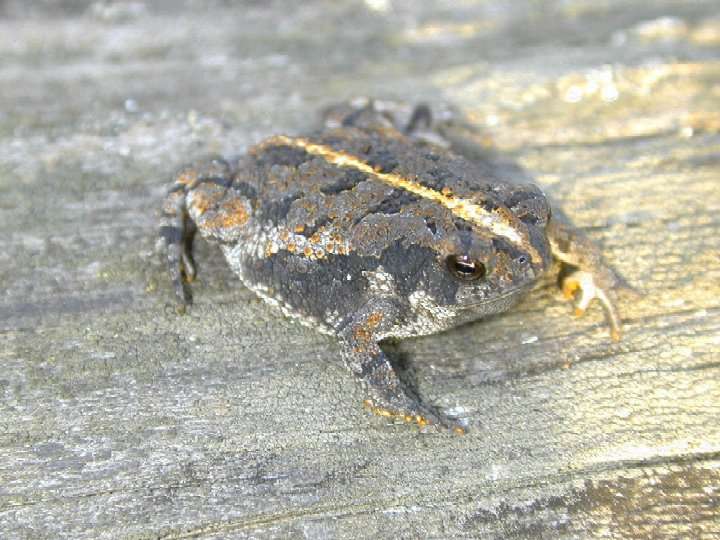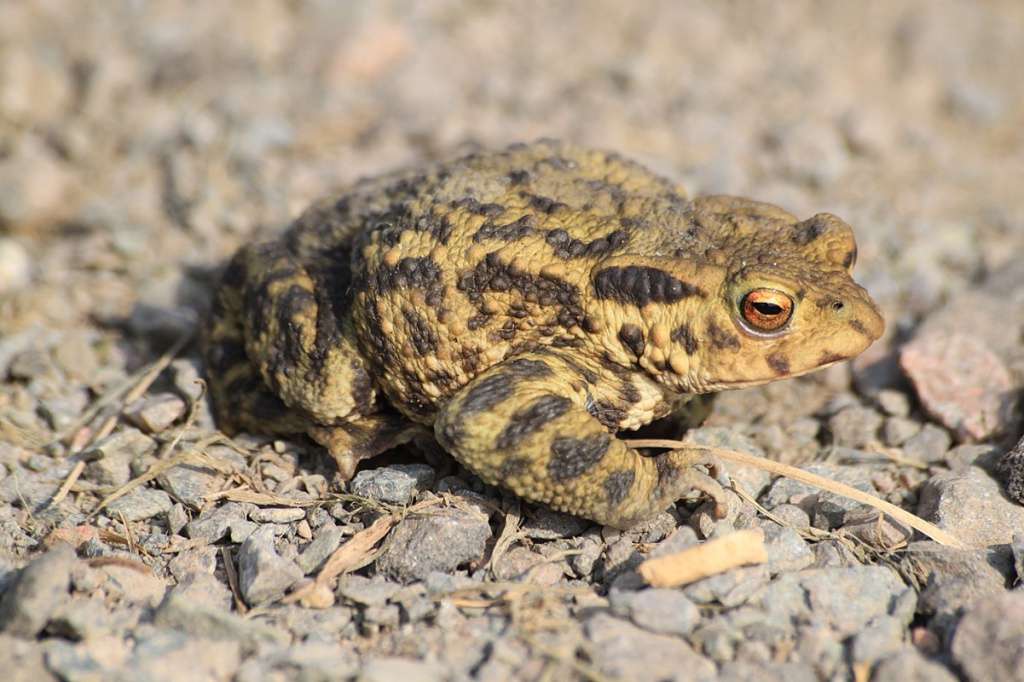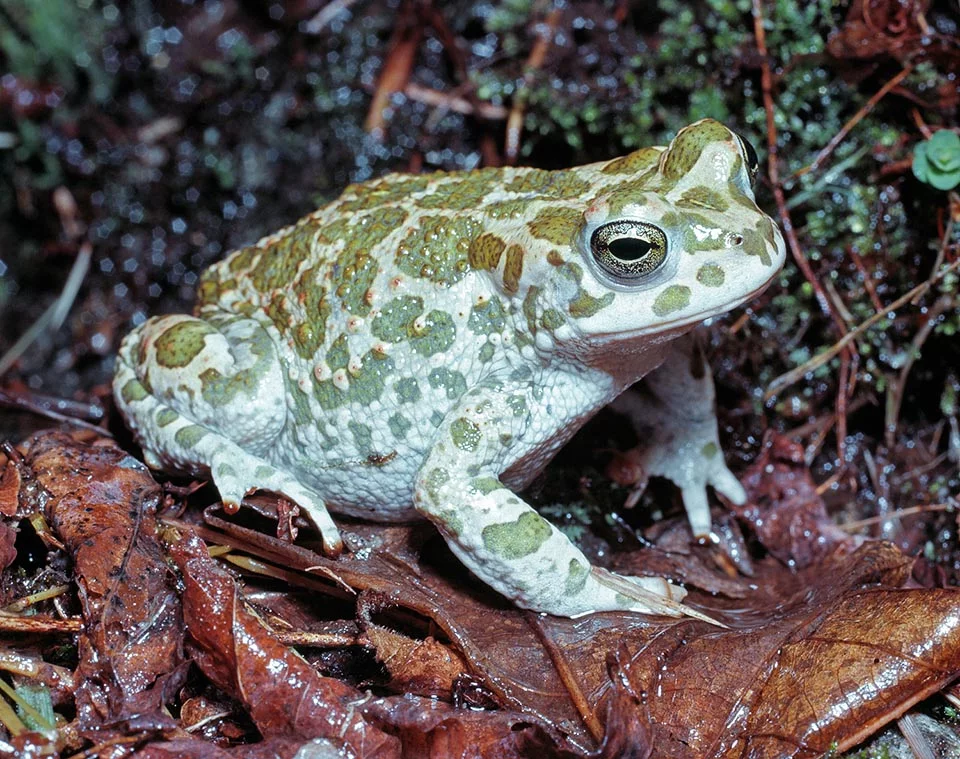
It only occurs in the coastal areas of the southeast United States. Its big parotoid glands, varied brown and black markings, and pale mid dorsal stripe can recognize the oak toad. The diminutive adult size of this species in comparison to other toads is one of its most striking characteristics. Sandy pine flatwoods, oak scrub, open pine and pine-oak woods, pine or oak savanna with sandy soils, and maritime forests make up the oak toad’s natural habitat. Eggs grow swiftly and hatch out in just 24 to 36 hours. The tadpole grows up to 18 to 19.4 mm in length (0.71 to 0.76 in). Its ventral side is reddish, and its dorsal side is gray olive or grape-green.
Habitat
The southeastern United States’ coastal lowlands are home to oak toads. They can be found from Florida’s southernmost point to Virginia’s southernmost region, as well as in some areas of eastern Louisiana. Oak toads are typically located close to pine or oak savannahs in damp, grassy places with sandy soil. They reproduce in ponds, ditches, and shallow pools.
Appearance
The smallest toad species, Anaxyrus quercicus in North America, is 1.9 to 3.3 cm in length. Due to its diminutive size, adults discovered in the wild are frequently referred to as “half-grown” or “juvenile” southern toads (Bufo lentiginosus). The small, flat body is black or brown in hue (colour can change with temperature), with a long dorsal stripe. That stripe may be white, cream, yellow, or orange. They have a short head and pointed nose. On the back, there are four to five pairs of dark blotches. The back has fine, red, orange, or reddish-brown bumps that give it a rough feel. The back is delicately tuberculate. The underside is tubercle-covered and has a grayish-white colour with no blotches. The parotid glands of oak toads are long and teardrop-shaped, and they extend along both sides.

Diet
Oak toads are predators that mostly eat tiny arthropods and terrestrial insects.
Reproduction
At temporary or semi-permanent shallow ponds, as well as roadside drainage ditches, males come first. Males establish territories and start calling females at breeding ponds. The male toad distributes his sperm near the eggs, external fertilization occurs. Male toad of this specie have an ovary that will function in the event of a testicular dysfunction, enabling them to reproduce as females.
When a male oak toad clutches a female from behind in a position known as amplexus, the two become a pair. Until the female releases her eggs into the water, the male remains connected to her. The male then releases sperm into the water after the female releases many eggs. The female will keep laying eggs. The eggs are released in bars that each hold four to six eggs. In one season, each female will produce roughly 700 eggs overall. Within 3 to 3.5 days, these eggs will hatch, and in 2 months, they will grow into adult oak toads.
Requirements to Keep as Pet
Habitat
The coastal plains of the Southeastern United States are home to oak toads. They typically inhabit grassy, damp places next to sand-covered pine or oak savannahs.
Tank Size
Oak Toads can live their entire lives in a 10-gallon tank due to their small size. Multiple specimens might benefit from a larger habitat. Similar-sized Oak Toads can be kept together with care.
Substrate
To replicate the Oak Toads native habitat, a 2″ layer of sand and soil would be excellent.
Temperature
Oak toads require an ambient temperature of between 75 and 80 degrees Fahrenheit.
Humidity
Due to their native climes, Oak Toads need to have a humidity of between 50 and 60 percent.
Watering
A sizable basin of clean water should be available. Always use bottled spring water or dechlorinated water.
Lighting
Oak toads don’t need lighting. Lighting may be utilized for live plant terrariums or for decorative purposes. Low-intensity UVB can be utilized as an anti-microbial and to encourage plant growth. There is currently no evidence to support the claim that this animal needs UVB light, though some caretakers choose to do so.
Table





